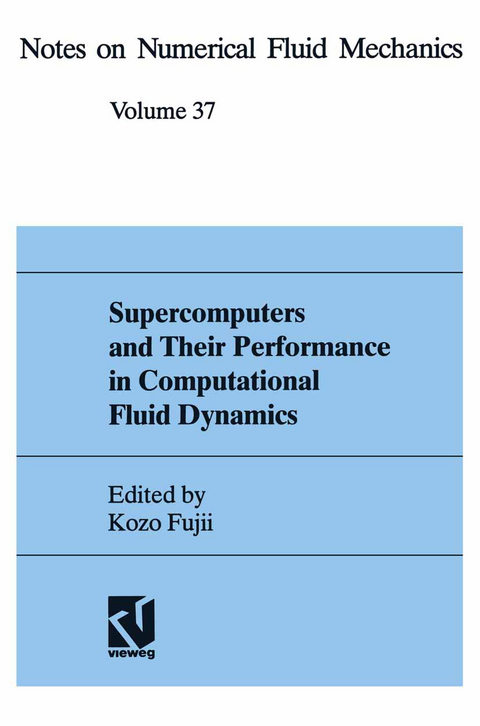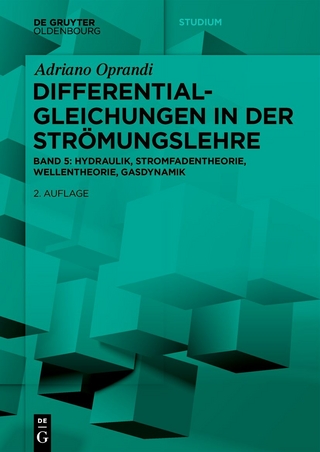
Supercomputers and Their Performance in Computational Fluid Dynamics
Vieweg & Teubner (Verlag)
978-3-528-07637-5 (ISBN)
I.: Cray Y-MP C90 Supercomputer.- 1. Introducing The Cray Y-MP C90 Supercomputer.- 2. Redefining High-Performance Computing.- 3. Bridging the Gap Between Potential and Productivity.- 4. Protecting Your High-End Supercomputing Investments.- 5. The Best Overall Supercomputing Solutions.- 6. New Technologies Maximize System Availability.- 7. Physical Description.- 8. Cray Y-MP C90 Highlights.- 9. The Most Powerful I/O Technology Available.- 10. Input/Output Highlights.- 11. Advanced SSD Technology.- 12. SSD Highlights.- 13. Disk Drives.- 14. Software.- 15. Network Supercomputing.- 16. Supportability.- 17. The Cray Y-MP C90 Supercomputer, Nothing Else Comes Close.- II. Fujitsu VP2000 Series Supercomputer.- 1. Introduction.- 2. Architecture.- 3. Hardware Implementation.- 4. Multiprocessor System.- 5. Hardware Technology.- 6. MSP System.- 7. Unix System.- 8. Language Processing System.- 9. Performance.- 10. Conclusion.- 11. References.- III. Hitachi S-820 Supercomputer System.- 1. Introduction.- 2. Architecture and System Organization.- 3. Logic Structure.- 4. Hardware Technology.- 5. Software.- 6. Performance.- 7. Conclusion.- 8. References.- IV. NEC SX-3 Supercomputer System.- 1. Introduction.- 2. System Configuration.- 3. Processor Configuration and Architecture.- 4. The Super-Ux Operating System.- 5. Fortran and Tools.- 6. Performance Results.- 7. Conclusion.- 8. References.- V. Trends in Vector and Parallel Supercomputer Architectures.- 1. Introduction.- 2. The Supercomputer CPU: An Overview.- 3. A Summary of Supercomputer Hardware Characteristics.- 4. Parallel Vector Computation, and Latency in Design.- 5. A Study of Vector Start-Up Time.- 6. Parallel Computation.- 7. Risc Architectures.- 8. Conclusion.- 9. References.- VI. Navier-Stokes Benchmark Tests.- 1. Introduction.- 2. Benchmark Test Features.- 3. Benchmark Test Result - 1.- 4. Benchmark Test Result - 2.- 5. Final Remarks On Both Benchmark Tests.- 6. Cray Y-MP C-90 Benchmark Report.- 7. Future Requirements.- 8. Final Remarks.- 9. Acknowledgment.- 10. References.- VII. Vectorization and Parallelization Techniques for Modern Supercomputers.- 1. Introduction.- 2. Basic Aspects of Vector and Parallel Processing.- 3. Vectorization and Parallelization of Algorithms.- 4. Concluding Remarks.- VIII.: UHSNWT Initiative at National Aerospace Laboratory.- 1. Background of Numerical Wind Tunnel.- 2. Demands in the System Manager's Eyes.- 3. The Uhsnwt Initiative.- 4. Overall Hardware Configuration of the Uhsnwt.- 5. Concluding Remarks.- 6. References.- IX. Addresses of Contributors.
| Erscheint lt. Verlag | 1.1.1993 |
|---|---|
| Reihe/Serie | Notes on Numerical Fluid Mechanics and Multidisciplinary Design |
| Zusatzinfo | 199 p. |
| Verlagsort | Wiesbaden |
| Sprache | englisch |
| Maße | 155 x 235 mm |
| Gewicht | 452 g |
| Themenwelt | Mathematik / Informatik ► Informatik |
| Mathematik / Informatik ► Mathematik ► Analysis | |
| Mathematik / Informatik ► Mathematik ► Angewandte Mathematik | |
| Naturwissenschaften ► Physik / Astronomie ► Mechanik | |
| Naturwissenschaften ► Physik / Astronomie ► Strömungsmechanik | |
| Technik | |
| Schlagworte | algorithm • algorithms • Calculus • computational fluid dynamics • Computer • Dynamics • fluid- and aerodynamics • Fluid Dynamics • Model • Optimization • Simulation • Sparse matrix • Strömungslehre/-mechanik • Strömungslehre/Strömungsmechanik • Supercomputing • Supercomputing / HPC (High-Performance-Computing) • Visualization |
| ISBN-10 | 3-528-07637-2 / 3528076372 |
| ISBN-13 | 978-3-528-07637-5 / 9783528076375 |
| Zustand | Neuware |
| Haben Sie eine Frage zum Produkt? |
aus dem Bereich


